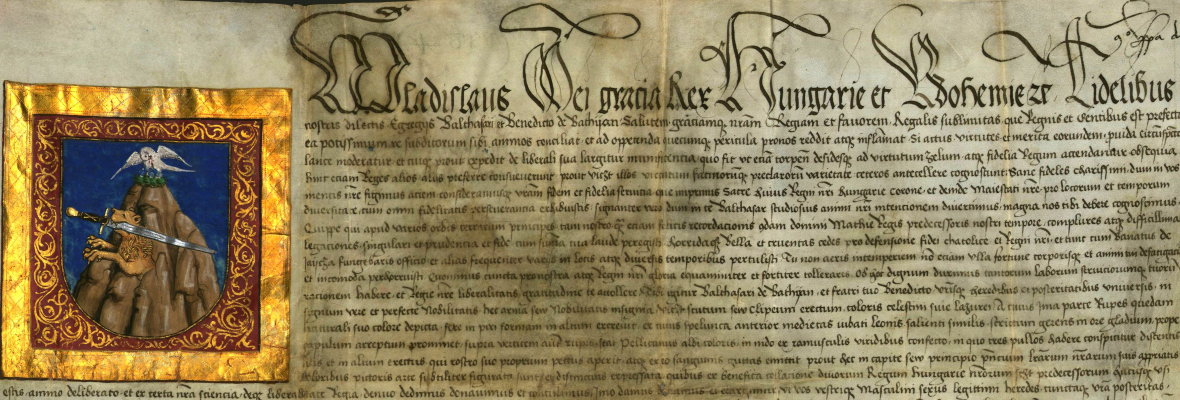Fidelitate et fortitudine. A selection of the charters of the Batthyány family newly placed in the National Archives of Hungary

In July 2021, after several years of preparatory work, the Hungarian state purchased from the Batthyány family the most valuable part of their archives, 520 mediaeval and early modern documents kept in Austria after 1945. The documents of this long-established family, which played an important role in the country's history, come from three series of the old Batthyány archives, which were organized in the second half of the 18th century. The Memorabilia series (297 documents) is the most valuable historical material from a national viewpoint, containing mainly royal letters and political documents. With the purchase, the pre-1526 part of the series, which is of inestimable public historical importance, was transferred almost in its entirety to the Central Archives of the Hungarian National Archives and is freely accessible for research. The other most notable part of the material for historical research is the so-called Heimiana or "Himfiana" series. This series was the former archive of the Himfys of Döbrente, one of the most influential aristocratic families of the Angevin era, and then it was passed on to the Batthyánys, who preserved it. The Heimiana collection originally contained 747 documents, 362 of which were deposited in the Central Archives in the 1950s. The newly acquired collection contains 141 of these documents, including 11 documents from the Árpád period and 125 from the Angevin era. The earliest is a charter issued by King Béla IV in 1256. The third series is the Acta Antiqua (48 documents), which contains the oldest charters concerning the family’s land properties. The collection also contains documents that do not belong to the aforementioned series. The new collection is an integral part of the Batthyány Archives, which were nationalised by the Act VII of 1949 and eventually transferred to the Central Archives. The documents were placed in the public collection as part of the nation's cultural heritage, where they are now available for scientific research after having been processed and digitised. Our exhibition offers a selection of the newly acquired collection, but also presents some of the Batthyány documents already in the National Archives.



